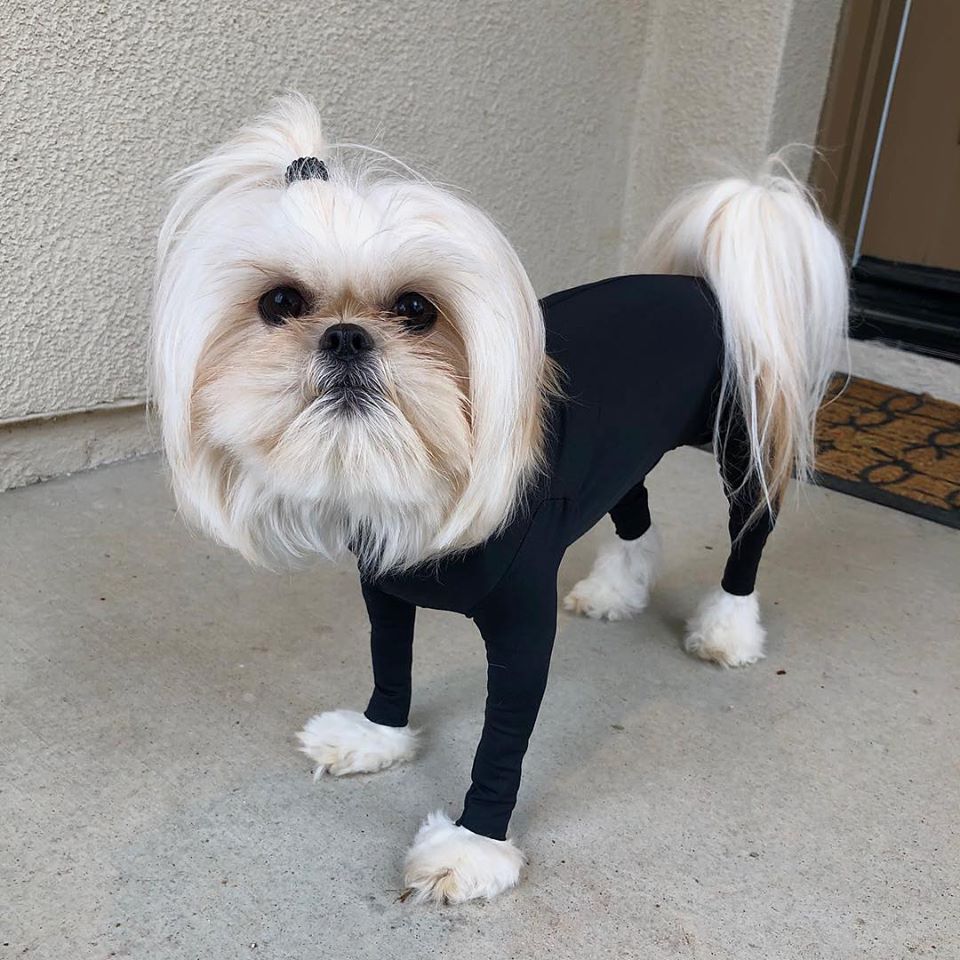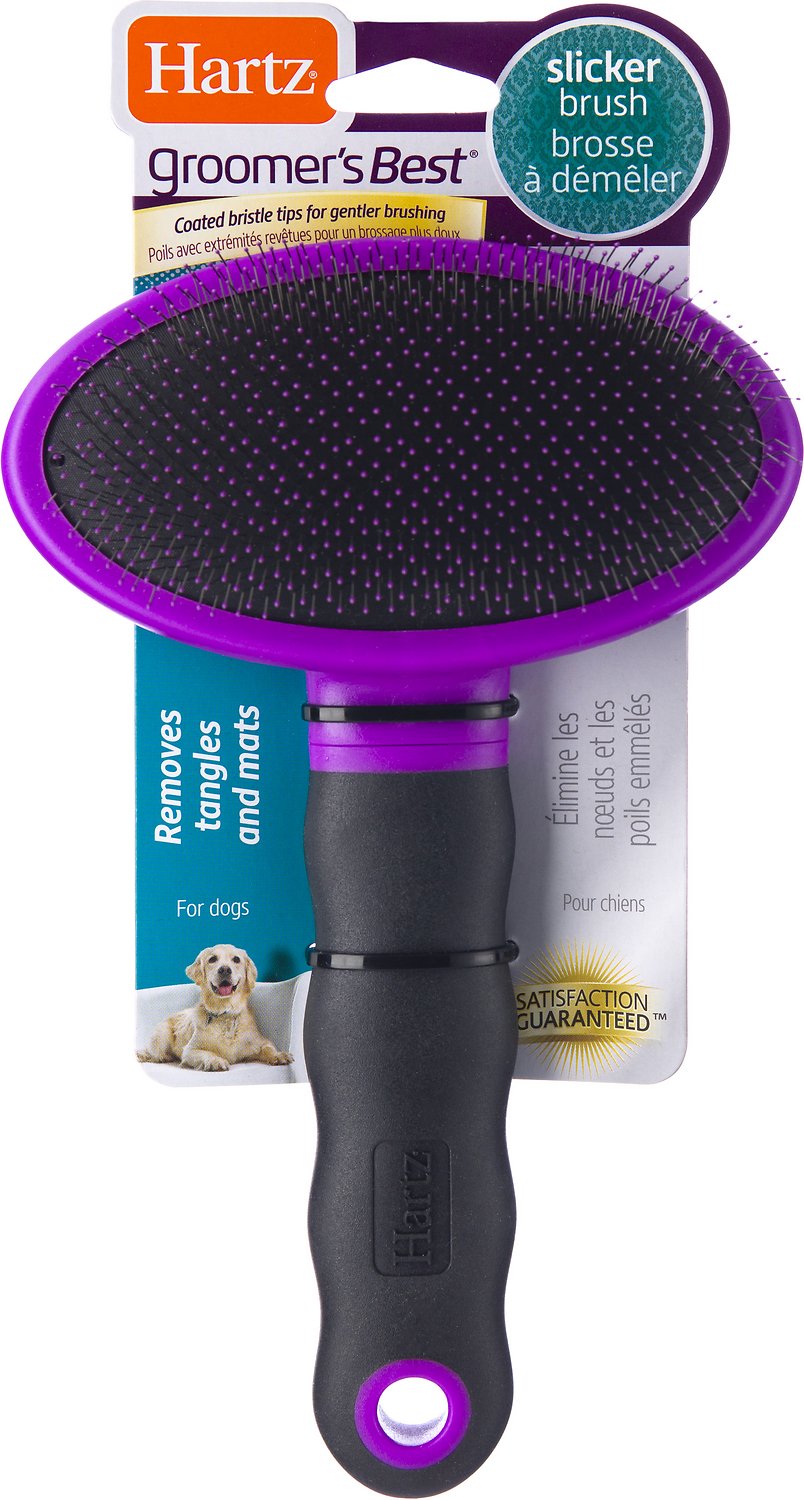It's that time of year again – As the mercury rises, so does the height of the hairballs dotting your rugs. Here's how to keep the tumbleweeds under control.
Let's address the elephant in the room first. While utterly hilarious, the Shed Defender leotards may not be the end-all, be-all in shedding control. If you do, however, want your dog to look like an extra in Fame, you can find them online here in a wide range of colors and sizes.

Courtesy of Shed Defender
Okay, on to the real solutions. The easiest way to control shedding is to brush your long-haired dogs daily. There are several types of brushes that are designed to help, and I've found the slicker type brush works the best. That, and they're very simple to clean. This Hartz version is available almost everywhere for under $10 so pick one up today.

Courtesy of Chewy
When brushing to remove loose hairs, always brush in the direction of the hair growth. Pay special attention to the neck, back, and butt areas – that's where they tend to grow a heavier winter coat. Even though it seems like you may be brushing out pounds of hair each time, you need to keep it up for a few minutes a day until nothing else comes loose with a gentle brushing.
Regular baths with a gentle dog shampoo will help with shedding too. Don't just wait until they get dirty to give your dogs a quick shower!

Courtesy of Pexels
The most obvious way to deal with shedding is to take your dog for a haircut. Just make sure to be specific about the look you're going for so he doesn't end up looking like this:

Courtesy of Rover
These are all ways to combat normal, seasonal shedding of extra fur. If your dog shows signs of underlying skin conditions, including sores or excessive, patchy shedding, it may be something else entirely. WebMD suggests taking your dog to the vet if you notice this type of abnormal shedding pattern.
Do you have a fool-proof method of getting dog shedding under control? Tell us about it in the comments!
